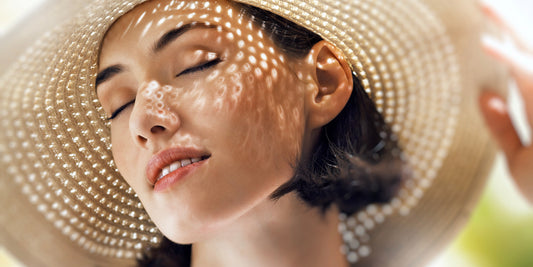If you’ve just started out on your skincare journey or you’ve been using products for a while, you may be wondering, “What do any of these ingredients do?”or perhaps “Why aren’t I seeing results?”. Many times we purchase products labeled as most effective for brightening skin or reducing wrinkles and on their own that may be the case, but other steps in our routine could be rendering them ineffective. Spend the time checking this list and compare these products to what you use everyday and make sure that you’re not doing more harm than good to your skin.

Vitamin C With AHAs/BHAs + Matrixyl
Vitamin C is a tricky ingredient on its own because of its unstable nature and unfortunately it doesn’t play well with other ingredients either. Vitamin C is great for brightening the skin, so that’s why you see it used in many brightening serums but brightening is just code for exfoliating and that’s also the main purpose of AHAs. Combining the two in the same day could damage your skin barrier and cause irritation, so it’s better to use them at different times. Matrixyl is similar to retinol in its ability to reduce wrinkles, but these peptides help rebuild skin and cannot do that effectively when Vitamin C is present, so try using them at night and Vitamin C in the morning.
Retinol With Vitamin C + Salicylic Acid (BHA)
Retinol also known as Vitamin A can irritate the skin alone, but with Vitamin C the chance of that occurring doubles. Previously, it was thought that they would destabilize each other, but that has turned out to be false, so only use them together if your skin handles them both well. It’s also recommended to switch up the products though because the risk of inflammation is so high. The same precaution must be taken with Retinol and Salicylic Acid because they are both strong ingredients that can cause irritation, so reducing that likelihood by switching products.
Glycolic Acid (AHA) With Salicylic Acid (BHA) + Lactic Acid (AHA)
Both Glycolic Acid and Salicylic Acid are excellent exfoliators, so it’s not necessary to use them at the same time. They achieve different goals, Glycolic Acid is better for reducing fine lines whereas Salicylic Acid is better for acne so if you do need to use both, use them at separate times. Lactic Acid is known as the gentler version of Glycolic Acid, so it’s redundant to use both and would only increase the risk of skin sensitivity.
Lactic Acid (AHA) With Salicylic Acid (BHA) + Matrixyl
Since Lactic Acid is an exfoliator like Salicylic Acid, avoid using them together. Matrixyl is like the baby version of Retinol and doesn’t play well with acids, so it’s recommended to not layer with Lactic Acid. These ingredients are also effective on their own, so try them separately and with a hydrating moisturizer to seal them in.
Niacinamide With Vitamin C + AHAs/BHAs
Old research showed that Niacinamide and Vitamin C combined would turn into niacin which can cause redness, but this is actually possible with any product and Niacinamide together, so long as your Niacinamide is properly stored away from heat and sunlight. If you’re worried about sensitivity, use harsher ingredients like these separate. Niacinamide affects the pH levels of AHAs and makes them less effective, don’t even try to make that combination work if you want results.
A healthy and knowledgeable approach to your skin will bring out your best performing skin, and we all want that radiant and youthful glow in our skin. Don’t let the abbreviations and long complicated words confuse you anymore. We’ve done the legwork to research them out, and break it down for you to make the equations work for you. And as always, don’t forget to start with clean fresh skin using our Ona Facial Brush. With TAO, we take care of our products so you can take care of you.
To get your Facial Brush today click now, click here.





